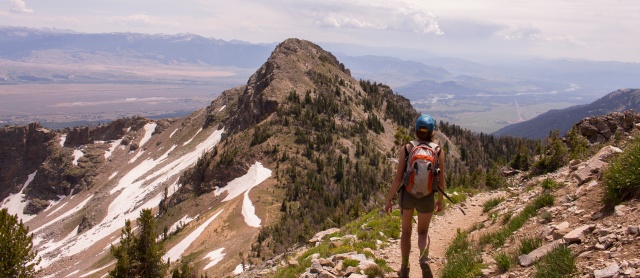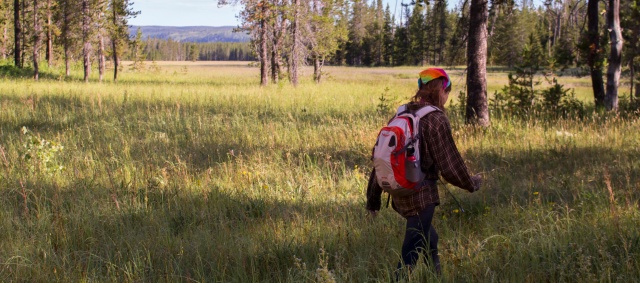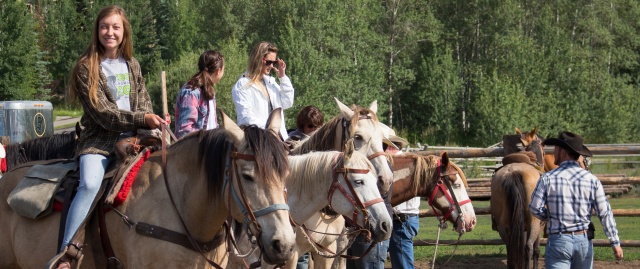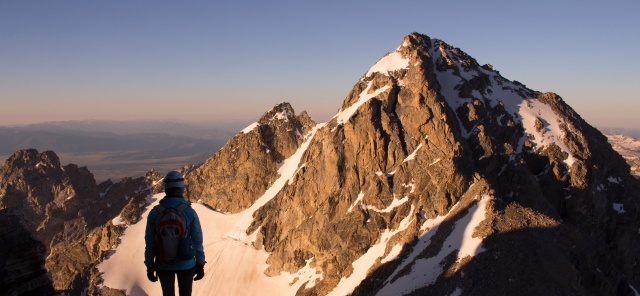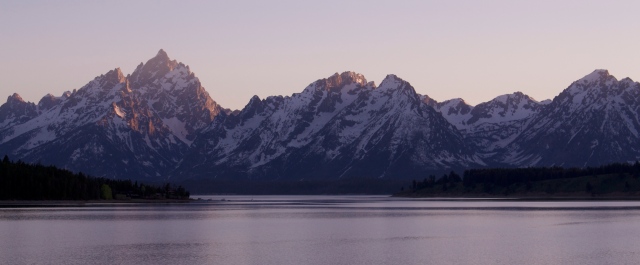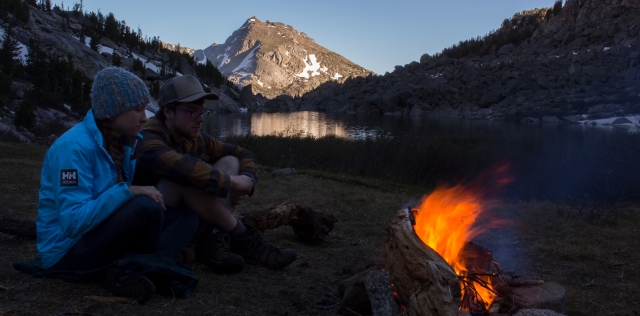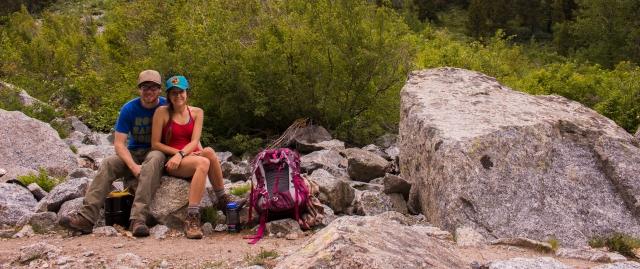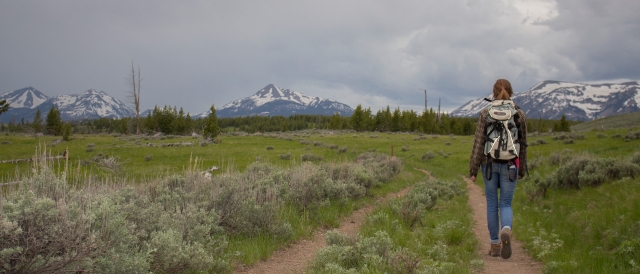We have come to our last few days in Wyoming and will soon begin packing up the tent and loading up the car, exactly two months to the day from when we arrived here. Our very last weekend was spent hiking to Static Peak at 11,300 feet (which I convinced Matt to complete in one day by conveniently failing to mention that it was almost 20 miles). We were chased from the top by a dark cloud– because no one wants to be on top of a mountain in a storm, but you especially don’t want to be on the appropriately-named Static Peak.
Our summer has been filled with spontaneous adventure, constant laughter, and relentless beauty. I knew this would be the summer of a lifetime, but never did I expect that it would be so all-around perfect. As a matter of fact, there are a multitude of things that happened this summer that I never thought I would experience.
For one, I never expected to live in Wyoming—but then, who really does expect to live in the least populated state in the country? I believe Wyoming is a state of many misconceptions. You picture farmland, cows, maybe some grassy plains, and probably more farmland. While a large portion of Wyoming does fit the stereotype, this is positively one of the most unexpectedly striking places I have ever been. The landscapes are incredibly diverse—and while the mountains, valleys, plains, and boiling hot springs are certainly beautiful in themselves, the contrast therein is what creates such ethereal magnificence.
On a similar note, I didn’t expect to have a cultural experience in Wyoming—again, who would? The ethnic and cultural diversity here is astounding and traveling here from overseas is extremely common. On any given outing it is normal to hear at least five different languages being spoken and to see clothing and customs from all over the world—all coming together, ironically, at a chuckwagon dinner.
I never thought I would live in a tent for an extended period of time. It’s certainly not the most ideal living situation, but this tent has been a fortress, never yielding to the rain, wind, or even snow. In this tent we’ve shared candlelit dinners on a Tupperware box table, watched countless late-night episodes of Friends, planned and packed for our quests into the wilderness (and recovered from them afterward), and, by my calculations, blown up our air mattress 54 times. While I am so looking forward there not being a parking lot between the bathroom and myself, I will miss the amusing simplicity of life in a tent.
I never expected to have to slam on my brakes for a bison standing stubbornly in the middle of the highway. I think I’m going to miss them almost as much as I’ll miss the mountains—I’ll also miss our ongoing debate about whether bison are the smartest or dumbest creatures on earth (it really could go either way). Many a car ride has been filled trying to figure out what the bison are thinking or why they’re doing what they’re doing—which usually isn’t much more than eating and walking, but every now and then you’ll get a jumper, or a ground roller, or even a rain dancer (the “Buffalo Shuffle,” according to Matt—it happened, I swear). I’m not sure why I feel so attached to these big furry cow cousins, but I know it just won’t be the same without the fear of totaling my car on a bison (who would probably think a fly had landed on him) every time I go somewhere.
I never ever expected to have use for an ice axe. When Matt packed them I remember thinking, “Oh, cool, just a precaution. Never going to have to actually touch that thing.” Wrong. I always supposed tools like that were reserved for hardcore climbers, summiting Everest or K2—not for lowly little me playing Let’s Climb a Mountain. But sure enough, those axes were absolutely vital to our ascent of Grand Teton—though I never want to need one again. (For that matter, I suppose I never expected to climb a mountain, but those mean looking ice axes stand out in my mind as a testament to the risk involved.)
More than all of these things, though, I never expected, at 20 years old, to have a life so overflowing with possibility and adventure. We have had the most amazing two months here, 2,000 miles from home, and are making plans to travel further and wider all the time.
Sunday night we’ll leave the campground and the Tetons and the bison behind (probably a little tearfully), and arrive alongside the sunrise at Glacier National Park in northern Montana. From there we’ll stop in the Badlands to tack one more park onto our trip, and then resume the almost 40-hour drive back to home sweet Tennessee.

